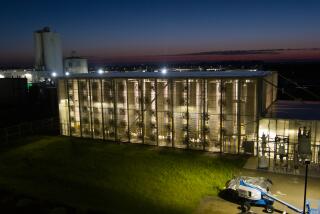Life in the Greenhouse
- Share via
A theory that burning enough fossil fuel would create a carbon-dioxide shroud around the Earth and warm it up enough to melt glaciers and make the oceans spill over has been around almost long enough to qualify as benign folklore.
No more. Scientists now mention specific dates by which the “greenhouse effect” could add between 5 degrees and 30 degrees to global temperatures if people keep burning coal and oil as though it made no difference. Few scientists are willing to say that the last nail has been driven in the greenhouse, but few dismiss the theory itself.
Pondering a centuries-long heat wave leads naturally to the immensity of the task of averting it, of persuading billions of people--particularly in Western industrial nations--to change the way they live enough to thin out the carbon-dioxide envelope. Nothing approaching that scale has ever been tried. Nothing like it on a far smaller scale has ever succeeded.
For example, Irving M. Mintzer, a scientist for the World Institute in Washington, told the New York Times recently that thinning out the carbon-dioxide envelope could work if the world took it seriously. If cars got twice as much mileage from a gallon of gasoline as they do now, if cities and suburbs were planned to reduce traffic congestion, if more forests were spared and light bulbs lasted longer, the industrial nations would be off to a good start. This assumes that officials would move quickly and forcefully. It also assumes some kind of aggressive cooperation in the United States, Europe and the Soviet Union, which among them account for three-fourths of the carbon dioxide in the global atmosphere, according to the U.S. Environmental Protection Agency.
The brief history of air-pollution control in Southern California is instructive. The South Coast Air Basin sprawls over county lines, not over continents, and officials presumably are in a better position to organize a defense against crippling levels of pollution. But every step toward cleaner air brings virtual trench warfare between government and industry and between officials and some citizens who regard any official interest in whether they car-pool or keep their houses too warm in winter and too cool in summer as meddling without merit.
Then there is the question of ironclad proof. It would be one thing if science could say with certainty that people of the industrial nations of the West must sacrifice some of their energy-related comforts in order to keep temperatures tolerable for people who will be living 50 or 100 years from now. It is quite another to persuade them to reduce energy use by enough to thin out the carbon-dioxide envelope by one-half on the basis of what most Americans at least regard as a threat only slightly more serious than radiation from microwave ovens.
But the United Nations Environment Program and two other organizations, the World Meteorological Organization and the International Council of Scientific Organizations, say that the world cannot afford to wait until scientists can certify the greenhouse effect. For a variety of reasons, including the restraining effect of the oceans on the world’s temperatures, there is a delayed reaction of 30 to 50 years to every day’s accumulation in the atmosphere of carbon dioxide and other polluting gases.
Scientists want immediate action, including an international agreement along the lines of the Law of the Sea, reductions in energy-related pollution and an end to the depletion of forests, which trap carbon dioxide and convert it into oxygen.
The next U.S. Administration should put the greenhouse effect high on its list of urgent work to be done. One place to start would be to take nuclear power out of the hands of the incompetents who have made the very name synonymous with potential disaster and transform the industry into an enterprise that can produce clean power without threatening the life around it.






